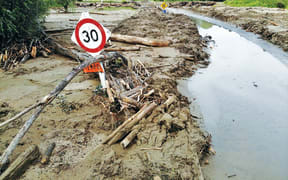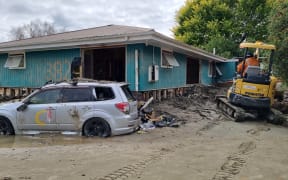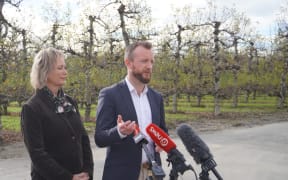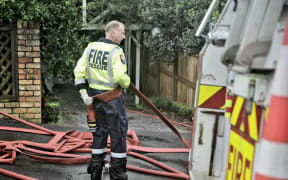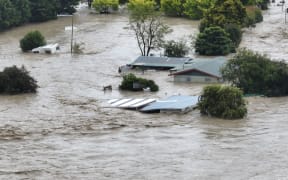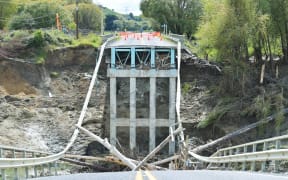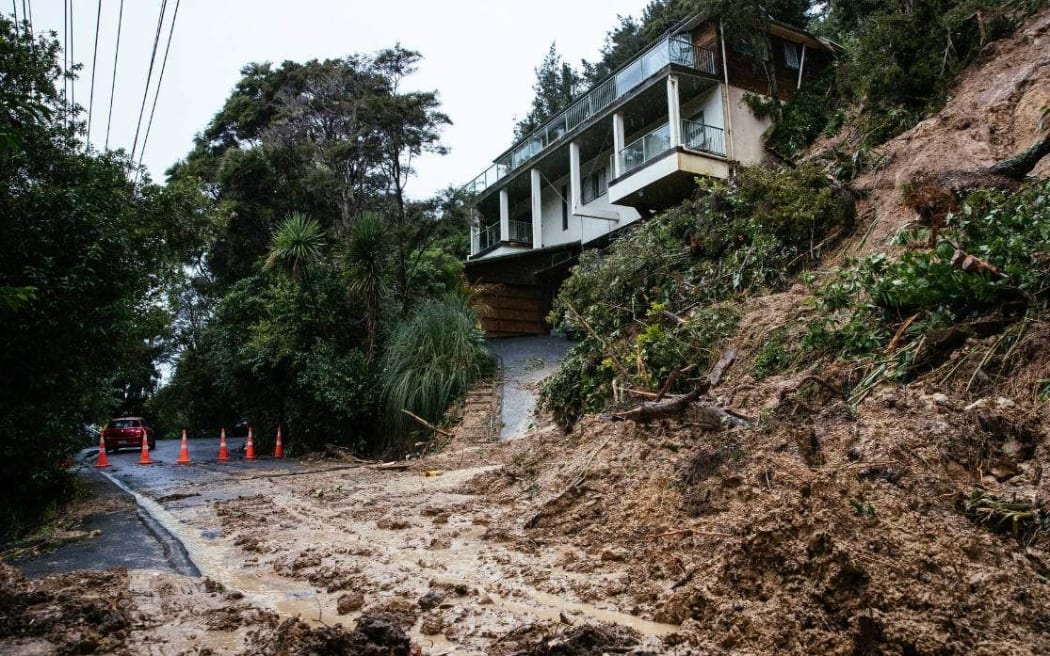
Just two-third of submitters to the inquiry on the response to the North Island storms received a warning or an alert. Photo: Stuff / Abigail Dougherty via LDR
New emergency management legislation has been delayed after the Government decided not to proceed with the bill introduced by Labour.
It comes as the government's Report of the Government Inquiry into the Response to the North Island Severe Weather Events, published on Tuesday, found the emergency management system had failed in places and was not fit for purpose.
Emergency Management Minister Mark Mitchell said the Emergency Management Bill needed more work.
"We're going to do that with urgency, but we're going to make sure that as a country we've got world class legislation that's going to set us up to make sure we're able to deal with weather events and states of emergency," he told Morning Report.
Cabinet had approved his request to disscharge the bill, he said.
The bill was introduced by the previous government in June last year, it was referred to the Government and Administration Committee which received 312 submissions on it. The Committee's report to the House was due in December. Oral submissions and official briefings had yet to be heard.
"Everything flows from the legislation," Mitchell said.
He said work was already being done to refocus the National Emergency Management Agency. And the Government could look to professionalise those involved in emergency response too.
"As the incoming government it became very obvious that we've got decaying infrastructure that needed investment, and we're committed to doing that, but we have to do that in a measured and a well-planned way."
In released Cabinet papers, Mitchell said he was concerned the proposed legislation was "buearucratic rather than practical" and would not make much difference on the ground.
He also raised concerns about the bill treating "certain groups in our community differently from others".
The bill included a requirement for Māori members on committees and as co-ordinating executives, as well as establishing a National Māori Emergency Management Advisory Group, and requiring emergency management committees to engage with Māori when developing plans.
RNZ had previously reported officials concerns with the legislation.
Labour leader Chris Hipkins said he'd like to see a detailed explanation of where the Government thought his party's legislation fell short and how it would improve it.
"I think it does address a lot of the issues, particularly around the fact that the National Emergency Agency didn't have the tools to step in and respond in events like the flooding and the cyclone."
Hipkins said every emergency over recent decades had been different and each one had highlighted different weaknesses in the system.
"We don't have a standing army of people sitting there waiting for an emergency to happen. When an emergency happens it's largely volunteers in the first instance who kick into gear and actually lead the emergency response and provide the support at the front-line."
One of the big weaknesses in the system was that it was largely left to local government and they didn't have the resourses and hadn't done a good job, Hipkins said.
Report finds failings
The national inquiry into last year's devastating North Island storms found only 66 percent of the people it heard from received a warning or evacuation alert, and many said it came too late.
Among its recommendations was the need for a warning system to cover all natural hazards, even when technology failed.
Warnings could currently be communicated through a range of channels including broadcast and print media, official websites, social media, and the emergency mobile alert system.
But the transmission of warnings and information during Cyclone Gabrielle was hindered by widespread internet and telecommunication outages.
As a result, locals found warnings "insufficient and ad hoc", both in Auckland during the Auckland Anniversary floods and in Hawke's Bay and Tai Rāwhiti during Cyclone Gabrielle.
"Consequently, people in unaffected parts of New Zealand often had a better idea about the severity and impacts of the events as they transpired than those in many affected areas," the inquiry found.
One Hawke's Bay resident told the inquiry panel: "Evacuation alerts were unclear, hard to interpret, and didn't really indicate the seriousness of what was happening and what could happen… [the notice] didn't communicate the damage and danger."
People's expectation for warnings and what they actually received were "mismatched".
"Some communities were expecting emergency mobile alerts or tsunami warning sirens to signal action was required, but these were not deployed.
"In most cases, there were no manual backup systems for circumstances where communications systems were compromised to the level experienced during Cyclone Gabrielle."
It found 66 percent of submitters did not receive a warning or evacuation notice, and many of those who did felt it came too late to sufficiently prepare.
A 'Swiss cheese' model
Submitters' suggestions for how to improve communication included the provision of infrastructure that did not rely on internet and telecommunications, such as Starlink and radio networks.
Telecommunications Forum chief executive Paul Brislen said a "Swiss cheese" model was needed.
"You have layers of capability, layers of redundancy, and overall you have a good opportunity to make sure that most communications will get through to most people."
This included mobile phones, landlines, short-range radio, and satellite internet.
He said the National Emergency Management Agency needed to be better resourced to deliver this.
"It's certainly not cheap, but it is absolutely do-able," he said. "As with all things in technology, it's simply a matter of how much money are you willing to throw at it."
Matthew Nolan, founder of alert system Readynet, which was used during the Christchurch Earthquakes and to mobilise volunteers cleaning up the Rena oil spill, said knowing whether an alert had been received was critical information - something which wasn't possible with the current alert system.
"If the message has not got through to a specific geographic area, because the cell towers are out or some other failure, the system [should] know that, so the people managing the event know that a certain area, a certain valley, a certain river catchment has not been informed."
Nolan said alternative methods of communication were important, but people had come to expect their communications to come via their phones.
"We're a society that relies on digital data, and it's imperative that people managing these events get warnings and alerts out as things unfold."
The report also recommended a "comprehensive and inclusive public education programme" alongside the alert system, "to ensure people know what kinds of warnings to expect".

